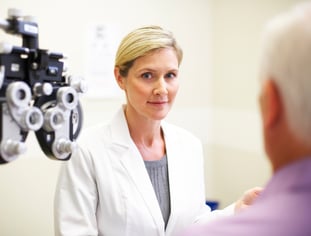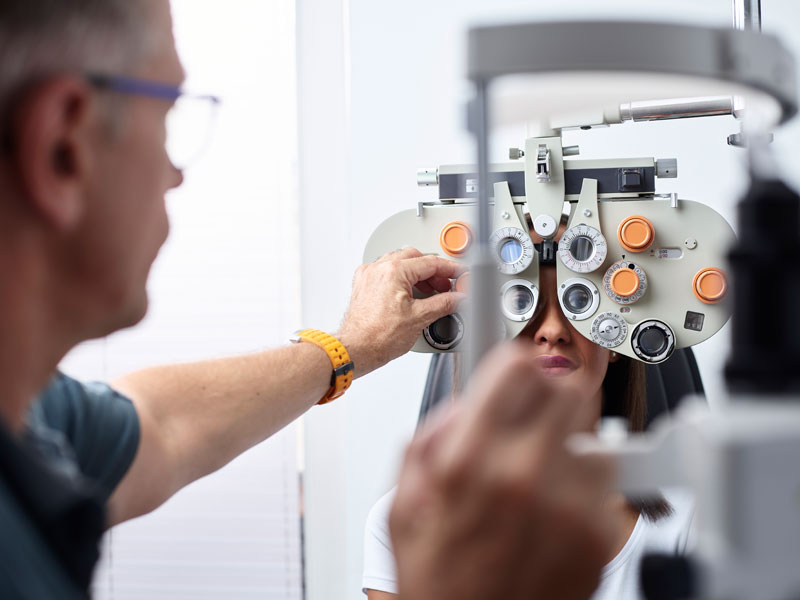Experience Personalized Care with Opticore Optometry in Chino
Experience Personalized Care with Opticore Optometry in Chino
Blog Article
Discovering the most up to date Technical Advancements in Optometry and What They Mean for Optometrists
In the ever-evolving area of optometry, recent technical advancements are reshaping exactly how practitioners approach eye treatment. From the precision of Optical Comprehensibility Tomography to the nuanced insights provided by AI-driven diagnostic tools, these developments are establishing new criteria in person assessment and therapy. Teleoptometry is poised to redefine access, making certain that expertise goes beyond geographical constraints. As these advancements penetrate the technique, optometrists are faced with the difficulty of welcoming these devices to improve person results. The inquiry stays: how will these technological shifts redefine the functions and duties within the profession?
Advancements in Diagnostic Devices
Progressing the field of optometry, technologies in analysis devices have changed the means eye treatment professionals analyze and detect ocular problems and visual impairments. The previous decade has observed considerable technological advancements, enabling even more exact and detailed evaluations.
An additional key innovation is the intro of sophisticated corneal topography systems, which map the surface area curvature of the cornea with precision. These devices are especially useful for fitting get in touch with lenses and diagnosing corneal disorders. Electronic retinal imaging has changed conventional ophthalmoscopy, offering thorough, scenic sights of the retina that promote thorough visual assessments.
The development of wavefront aberrometry has actually also been important, enabling the analysis of refractive mistakes with unrivaled accuracy (Optometrist Chino). This innovation helps in personalizing restorative lenses and improving medical results for refractive surgical procedures. Jointly, these diagnostic improvements equip optometrists to provide premium person treatment, making sure early intervention and customized treatment strategies, ultimately improving aesthetic health and wellness outcomes
AI in Patient Management
Building on the structure of advanced diagnostic devices, the unification of artificial knowledge (AI) in individual monitoring represents a transformative jump for optometry. AI systems are significantly utilized to enhance efficiency, precision, and customization in individual care. By evaluating vast quantities of information, AI can recognize patterns and anticipate potential eye problems, allowing optometrists to tailor treatments better. This ability is essential in handling chronic eye conditions such as glaucoma and diabetic retinopathy, where very early discovery and constant tracking are vital.
Moreover, AI-driven systems assist in structured client communications and administrative processes. Automated organizing, virtual appointments, and customized follow-up plans not just improve individual satisfaction yet also optimize time monitoring for specialists. These systems can triage people based on the urgency of their conditions, making certain that those in vital demand receive prompt attention.
Moreover, AI enhances decision-making by giving optometrists with evidence-based suggestions and treatment pathways. By incorporating information from digital health documents, AI tools offer insights that notify medical choices, decreasing the danger of errors and enhancing individual end results. As AI continues to advance, its duty in patient management will likely increase, improving the landscape of optometric treatment.
Advances in Retinal Imaging
In the world of optometry, retinal imaging has experienced remarkable technical innovations that are improving diagnostic capacities and individual treatment. Technologies such as Optical Comprehensibility Tomography (OCT) and fundus photography have revolutionized how eye doctors imagine and evaluate the retina.
Boosted imaging modalities like OCT angiography are more refining analysis precision. This non-invasive strategy maps blood flow in the retina, using critical understandings right into vascular health without the need for dye injections. Furthermore, adaptive optics modern technology is being incorporated into retinal imaging systems to remedy eye aberrations, providing unprecedented image quality. Such advancements facilitate the recognition of min retinal changes that might indicate disease progression.
Additionally, developments in artificial intelligence are increasing retinal imaging by enabling automated evaluation of big datasets. These systems help optometrists in recognizing patterns a sign of pathology, thereby enhancing analysis accuracy and performance. Jointly, these technologies are changing retinal imaging into a keystone of modern-day eye treatment, improving outcomes and expanding healing opportunities.
Teleoptometry's Expanding Function
Teleoptometry is increasingly coming to be an essential part of eye treatment, driven by developments in electronic interaction and diagnostic tools. As optometry embraces electronic improvement, teleoptometry assists in remote site link examinations, permitting optometrists to extend their solutions past standard borders. This is specifically useful in underserved and rural areas where access to specialized eye treatment is commonly limited. By leveraging high-resolution video conferencing and progressed retinal imaging, optometrists can carry out detailed eye tests from afar, guaranteeing timely diagnosis and treatment.
The integration of artificial intelligence (AI) further boosts teleoptometry, making it possible for the evaluation of aesthetic information and helping in the discovery of eye problems such as glaucoma and diabetic retinopathy. AI-powered algorithms can swiftly analyze complicated imaging data, supplying optometrists with beneficial insights that reinforce medical decision-making.
Additionally, teleoptometry supports connection of care via seamless combination with digital health records (EHRs), permitting eye doctors to keep thorough individual histories. This guarantees that people receive regular and customized care also when talking to different specialists.
In spite of these advantages, obstacles stay, consisting of ensuring information security and managing person expectations. Teleoptometry stands for a considerable stride in the direction of more available, see this reliable, and patient-centered eye care. As technology progresses, its function is positioned to expand better.

Future Fads in Eye Treatment
A myriad of cutting-edge fads is readied to reshape the future of eye treatment, driven by technical advancements and the progressing requirements of individuals. One significant pattern is the combination of expert system (AI) in diagnostics, which promises to improve the precision and effectiveness of eye evaluations. AI formulas can assess huge quantities of information from retinal photos, potentially detecting conditions like diabetic person retinopathy and glaucoma earlier than standard methods.
Additionally, customized medication is obtaining grip in optometry, with genetic screening informing tailored treatment strategies. This strategy intends to optimize person end results by tailoring treatments to private genetic profiles. Wearable modern technology, such as wise get in touch with lenses, is additionally imminent, supplying real-time surveillance of intraocular pressure or glucose levels, thus offering continual insights right into ocular and systemic health and wellness.
The adoption of enhanced fact (AR) and virtual fact (VIRTUAL REALITY) in training and person education and learning is another arising trend. These modern technologies provide immersive experiences that can improve understanding and skills both for eye doctors and clients. As these fads develop, eye doctors need to stay abreast of technical advancements to provide innovative care, guaranteeing improved patient results and contentment in the vibrant landscape of eye care.
Conclusion

Collectively, these diagnostic improvements empower optometrists to supply premium client treatment, making certain very early treatment and customized treatment strategies, ultimately boosting visual health end results.

As these modern technologies continue to develop, optometrists must adapt and incorporate them into practice, eventually optimizing process effectiveness and raising the criterion of eye care delivered to individuals.
Report this page